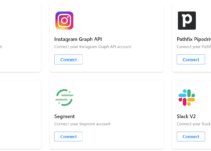When trying to add integrations, most SaaS builders often choose to offer webhooks as a way to fetch or sync data between platforms.
But, what are webhooks and how can you leverage 3rd party webhooks to build integrations in your SaaS that your customers need? Let’s dive right in.
What are webhooks?
Webhooks are automated alerts that are sent when there is a change of any type on a platform. Think of it like a sms notification you receive when there is a change on a specific app.
A webhooks almost always contains a payload, the actual data package, with details on what specifically has changed. Once you receive this notification, based on the payload received, you can query the system to fetch the updated data.
Webhooks vs. Polling
Polling, essentially, is when you constantly send a request to a system (aka poll) to check if there are any changes. Polling can be set up to run a check anywhere from a few seconds to hours. As you can imagine, this is extremely resource intensive and not the most efficient way of checking for change.
This makes polling:
- Resource intensive
- Difficult to manage at scale
- Face issues related to synchronization with large amount of data
- Choke your local db with heavy Computing
- Exhausting to debug and rerun on errors
On the other hand, Webhooks are:
- Extremely efficient with light computing powers
- Capable of offering in-time notifications
- Able to re-run if there are failures
- Capable to syncronize just a few records at a time
This is what makes Webhooks a more effective and efficient way of getting notified of any change.
Why should you care about webhooks?
When building user-facing integrations in your SaaS, you may want to offer the ability to keep their account updated with data from a 3rd party app. Polling the app for data changes would be not be the best way to do this.
You need Webhooks.
Setting up Webhooks
If you are building out webhook listening capabilities for each app provider, this can get a bit complicated. Every provider has their own, well defined, methods and processes to access and activate webhook listening. Not to forget the resources, servers and developer hours required. Building this can take anywhere from weeks, if not months for a single provider.
This is where an integration platform, such as Pathfix, can help.
Please note: the webhook functionality is only available in Pathfix Automation and works with the authentication provided by the Pathfix OAuth platform.
Pathfix Automation has pre-configured webhook connections to a few providers, this makes it easy for you to be able to connect, start listening for webhook events for each provider and add the integration to your platform.

The click-to-configure user facing webhooks can be setup in just a few minutes for any of the available providers. Once set up, you can trigger an API Automation within the platform and get mapped data back into your system.
The following example shows a simple use case, where:
- We listen for a webhook change notification if a new calendar event is created
- Then we create the same event in Google Calendar
- Create the event in Microsoft Calendar
- Send the data back to your database

This one-time setup allows you to enable webhook listening in your app AND get mapped data for each user, without managing servers or adding unnecessary code for you to manage.
Conclusion
Webhooks are a fantastic means for you to be able to sync data between your platform and any 3rd party application.
If you are ready to build out your integrations, check out the Pathfix platforms for your specific needs:
- OAuth platform: solve your oauth connectivity
- Automation platform: API integration and webhooks
Need help with your integrations? Reach out to us and we will be happy to set this up for you.



